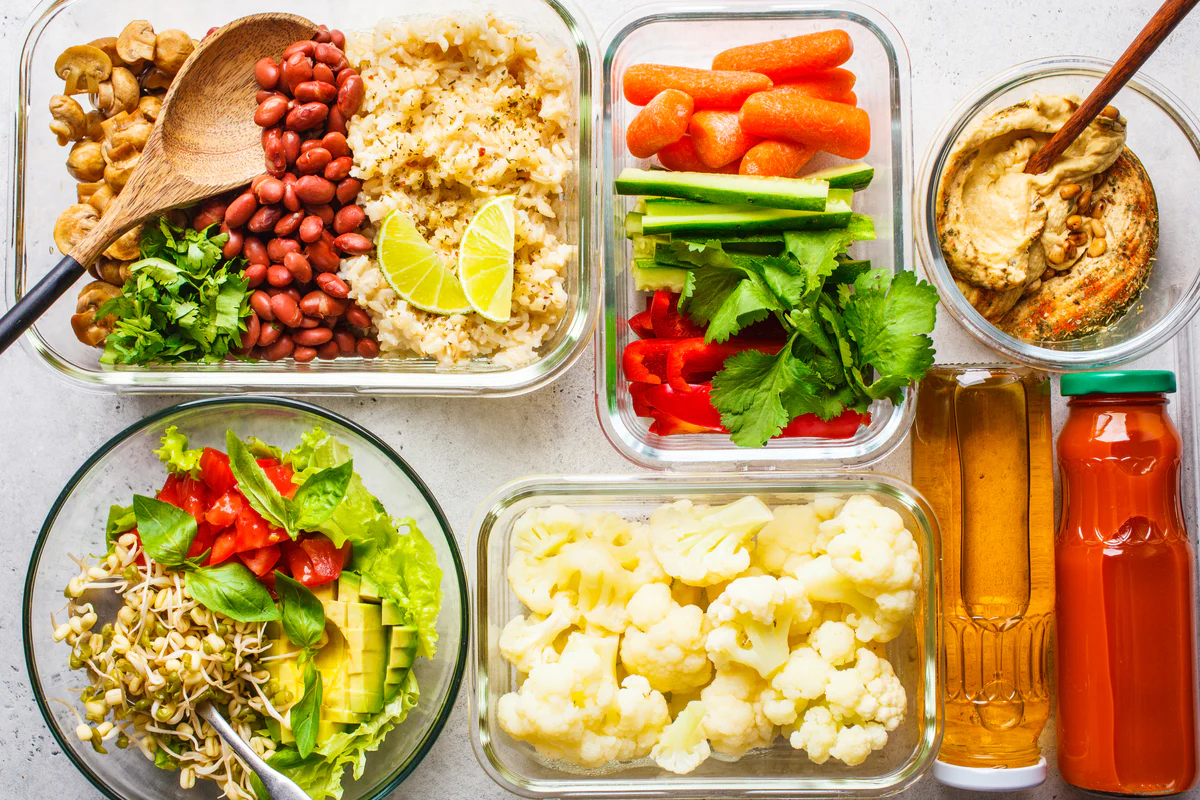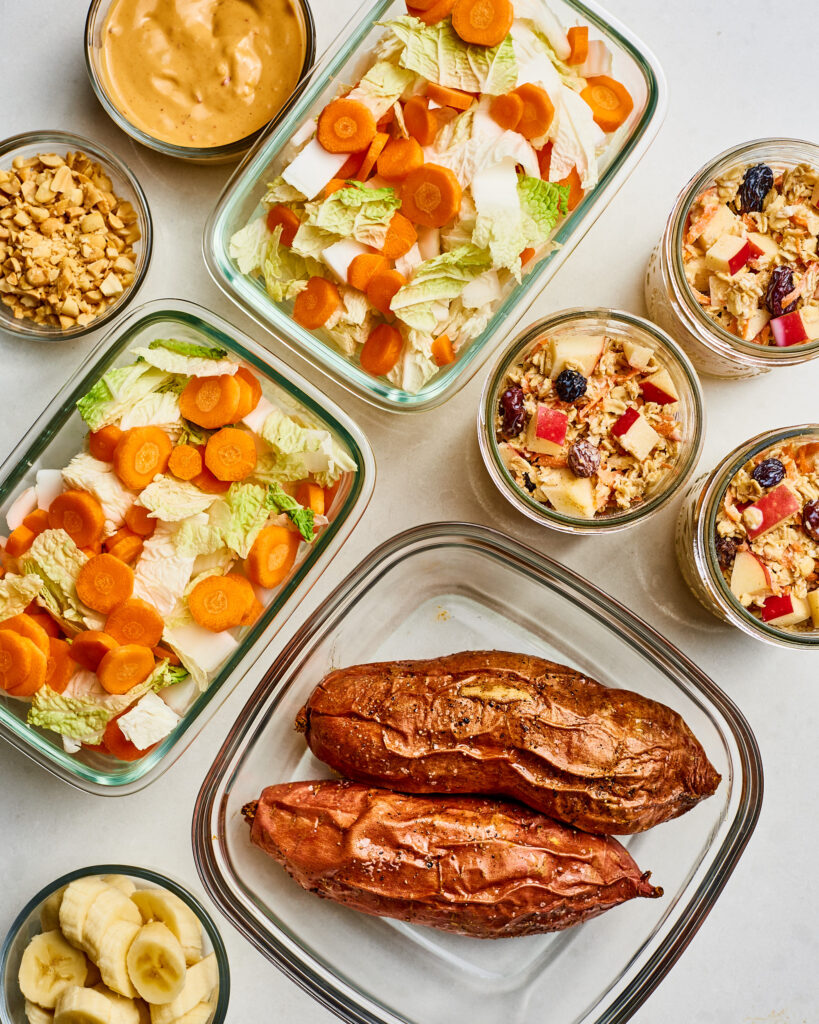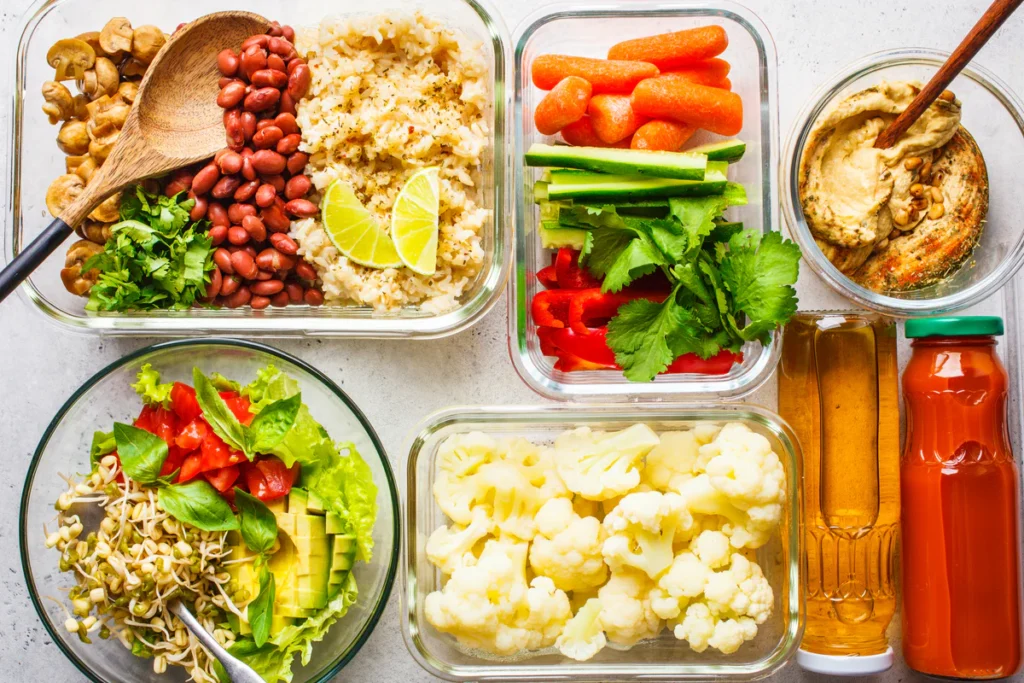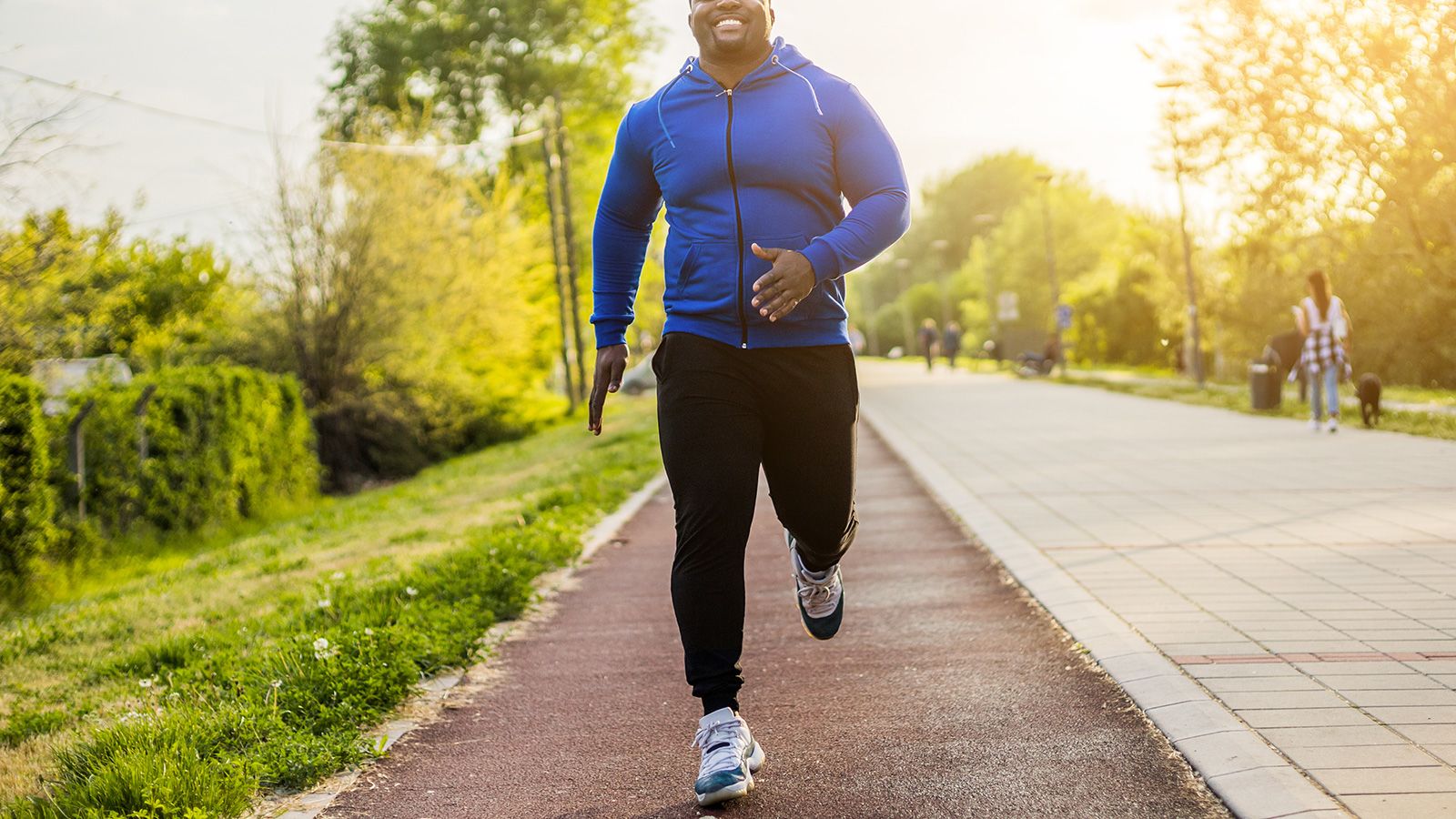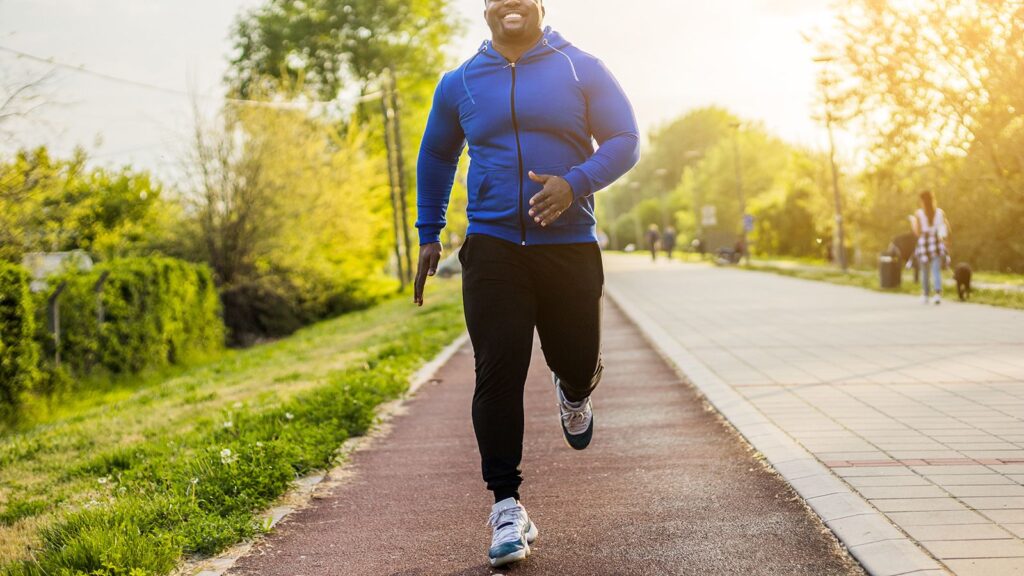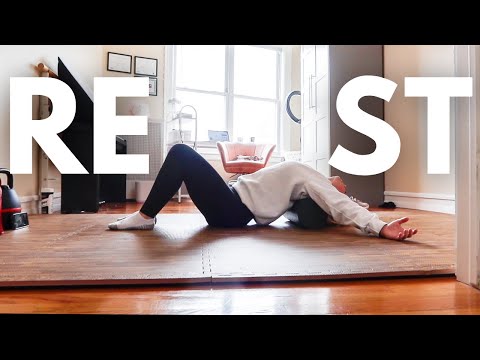Meal Prep Magic: Healthy Recipes for a Week of Easy, On-the-Go Lunches, Packed with fresh vegetables, protein-rich quinoa, and a zesty dressing, this salad is both satisfying and nutritious.

Ingredients:
- 1 cup quinoa, cooked
- 1 cup cherry tomatoes, halved
- 1 cucumber, diced
- 1/2 red onion, finely chopped
- 1/2 cup Kalamata olives, pitted and sliced
- 1/4 cup feta cheese, crumbled (optional)
- 1/4 cup fresh parsley, chopped
- 3 tablespoons olive oil
- 2 tablespoons lemon juice
- 1 teaspoon dried oregano
- Salt and pepper to taste
Instructions:
- In a large bowl, combine quinoa, cherry tomatoes, cucumber, red onion, olives, feta cheese, and parsley.
- In a small bowl, whisk together olive oil, lemon juice, oregano, salt, and pepper.
- Pour the dressing over the salad and toss to combine.
- Divide into meal prep containers and refrigerate.
READMORE: Plant-Based Power: 7 Protein-Packed Vegan Dinner Recipes
2. Chicken and Veggie Stir-Fry
This flavorful stir-fry is loaded with colorful vegetables and lean protein, perfect for a quick and healthy lunch.
Ingredients:
- 2 chicken breasts, sliced thin
- 2 cups broccoli florets
- 1 red bell pepper, sliced
- 1 carrot, sliced
- 1 cup snap peas
- 2 garlic cloves, minced
- 1 tablespoon ginger, minced
- 1/4 cup soy sauce
- 2 tablespoons hoisin sauce
- 1 tablespoon sesame oil
- 1 tablespoon olive oil
- Cooked brown rice
Instructions:
- Heat olive oil in a large pan over medium-high heat. Add chicken and cook until browned. Remove and set aside.
- In the same pan, add sesame oil and sauté garlic and ginger until fragrant.
- Add broccoli, bell pepper, carrot, and snap peas. Stir-fry until tender-crisp.
- Return chicken to the pan and stir in soy sauce and hoisin sauce. Cook for another 2 minutes.
- Serve over brown rice and divide into meal prep containers.
3. Vegan Burrito Bowls
These burrito bowls are loaded with black beans, rice, and a variety of fresh toppings for a satisfying plant-based lunch.
Ingredients:
- 1 can black beans, drained and rinsed
- 1 cup corn kernels
- 1 cup cooked brown rice
- 1 cup cherry tomatoes, halved
- 1 avocado, diced
- 1/4 cup red onion, diced
- 1/4 cup fresh cilantro, chopped
- 1 lime, juiced
- 1 teaspoon cumin
- 1 teaspoon chili powder
- Salt and pepper to taste
Instructions:
- In a bowl, mix black beans, corn, cumin, chili powder, salt, and pepper.
- Divide cooked brown rice into meal prep containers.
- Top with black bean mixture, cherry tomatoes, avocado, red onion, and cilantro.
- Drizzle with lime juice before sealing the containers.
4. Turkey and Sweet Potato Skillet
This one-pan dish is easy to make and packed with lean protein and complex carbohydrates to keep you energized.
Ingredients:
- 1 pound ground turkey
- 2 large sweet potatoes, peeled and cubed
- 1 onion, diced
- 2 garlic cloves, minced
- 1 bell pepper, diced
- 1 zucchini, diced
- 1 teaspoon paprika
- 1 teaspoon cumin
- Salt and pepper to taste
- 2 tablespoons olive oil
Instructions:
- Heat olive oil in a large skillet over medium heat. Add ground turkey and cook until browned. Remove and set aside.
- In the same skillet, add sweet potatoes and cook until they start to soften.
- Add onion, garlic, bell pepper, and zucchini. Cook until all vegetables are tender.
- Return turkey to the skillet and stir in paprika, cumin, salt, and pepper. Cook for another 2 minutes.
- Divide into meal prep containers and refrigerate.
5.Greek Yogurt Chicken Salad
This lighter version of chicken salad uses Greek yogurt instead of mayo and is perfect for a quick and healthy lunch.
Ingredients:
- 2 chicken breasts, cooked and shredded
- 1 cup Greek yogurt
- 1/2 cup celery, diced
- 1/4 cup red onion, finely chopped
- 1/4 cup fresh dill, chopped
- 1 tablespoon Dijon mustard
- 1 tablespoon lemon juice
- Salt and pepper to taste
- Whole-grain wraps or lettuce leaves for serving
Instructions:
- In a large bowl, mix shredded chicken, Greek yogurt, celery, red onion, dill, Dijon mustard, lemon juice, salt, and pepper.
- Divide into meal prep containers.
- Serve with whole-grain wraps or lettuce leaves.
Final Thoughts
Meal prepping these healthy and easy-to-make recipes will ensure you have delicious, nutritious lunches ready to go throughout the week. Not only will this save you time and stress, but it will also help you maintain a balanced diet and stay energized. Enjoy the convenience and health benefits of meal prep magic!


